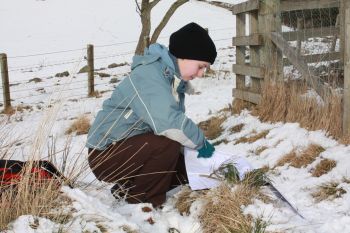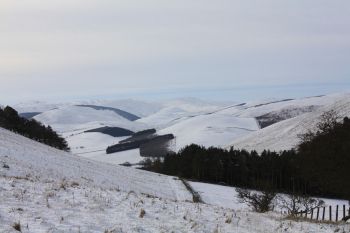 With just over a month to go until I finish my apprenticeship, I thought it was time for another blog as it’s been a while. Things have been a bit manic in the office, which has been good in some ways as I feel like I have been learning a lot, but in other ways I wonder where time has gone.
With just over a month to go until I finish my apprenticeship, I thought it was time for another blog as it’s been a while. Things have been a bit manic in the office, which has been good in some ways as I feel like I have been learning a lot, but in other ways I wonder where time has gone.
Since I last blogged in November, I have been doing much more of the same with regards to agri-environment schemes, and I am now confident in suggesting management to farmers and dealing with the applications from start to finish. Patrick, my mentor at Edwin Thompson, gave me all eight of the environmental applications to do for this round of SRDP. From start to finish the applications required a huge amount of work, and allowed me to gain experience in a range of ways. I carried out the required habitat surveys with Maggie, our ecologist, which meant noting the key species in wetlands, arable margins, water margins, hedges and species rich grasslands. I then had to write management plans for these habitats to tie in with the government guidance on habitat management and with the farmer’s current management practices and grazing potential. I also drew all the required maps, wrote an environmental outcome plan on a whole farm scale and entered all the data online for these applications. The applications were submitted in January, and were followed by a barrage of emails and phone calls from case officers demanding things from the field number for an area of land they were querying, to entire management plans for habitats. Often, I was asked to justify the options I had chosen and in many cases had to argue why I thought a field was suitable for open grazed grassland for waders, or why a gate was needed in a fence. It was very frustrating at times as I often felt we were losing sight of what we were trying to achieve, but I got there in the end and all my applications were finally committed last week.
I have also been busy on the other side of the Border, working on an HLS application for the big estate that we have been working on since I started here. I have carried out several days (possibly weeks now!) of habitat surveys, and recently I have been focussing on the woodland areas of the estate. This involves visiting every scrap of wood and deciding whether it is native, non-native, plantation, natural, mixed or “landscape” woodland. I also needed to note down all the species present, and what condition the woodland is in. I found some of this work particularly challenging as I only went out with Maggie a few times before attempting the surveys on my own, with Jenn from my office helping. Jenn has no tree ID experience, and I think it would be fair to describe my skills as “limited”! We therefore spent hours standing looking at trees, trying to break bits off, sniffing cones and needles and crawling around in the leaf litter for cones and other tree “clues”. It was very frustrating at times, as we had to walk miles to get right up close to woods to identify the trees, whereas I knew Maggie would have been able to ID them from miles away by looking at the shapes of the trees using binoculars. However, we got there in the end, and there was a sense of achievement when we managed to ID all the species. I was particularly excited when I realised that the needles of the tree I had identified as Douglas Fir did indeed smell of citrus when crushed, as described in my vintage tree book (50p in Cancer research, bargain. However, I did discover that half the pages are in upside down, and that a great number of trees are missing, not so much of a bargain now. The Collins Field guide to trees has now been purchased and I will never again boast about my charity shop finds!).
I have booked myself onto a few courses to help with my tree ID and grass ID, both of which will be extremely useful in my future career. With only six weeks left, I have been thinking a lot about what path my career is taking, and hopefully I will be offered a job here when my placement ends, so that I can carry on the work that I enjoy. I still have a lot to learn before I can class myself as a “farmland ecologist”, but I think I am definitely getting there!

